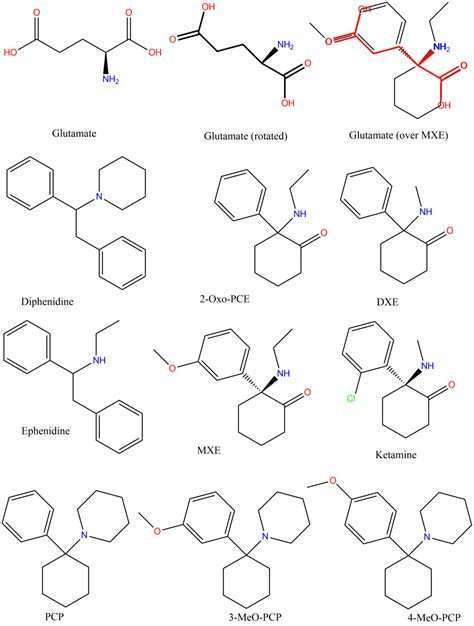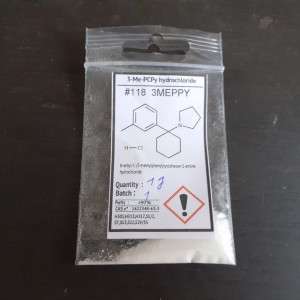
Dissociatives
Dissociative substances are a class of hallucinogens that distort the perception of sight and sound. Dissociatives also cause a sense of detachment from the environment and from oneself. Initially, they were developed as an analgesic for general use in surgery.
The effects of these substances are diverse, most often unpleasant. But the experience gained from their use is considered unique and valuable by some addicts, so dissociatives are still in demand among drug addicts.

Dissociatives – description, composition, effect, property
Dissociatives are psychoactive substances belonging to a number of anesthetics. Initially synthesized exclusively for medical purposes. Drugs of this series cause an imbalance of the elements of the mind, disrupt the connections between neuroreceptors. Memory, perception and consciousness dissociate from each other under the influence of the drug.
The popularity of the drug among young people is explained by the need to belong to a unique counterculture (psychedelia) and the thirst to experience unusual experiences. Dissociatives that cause vivid and fantastic sensations attract teenagers much more than hard-to-reach and less “interesting” opium or expensive cocaine.
In a moderate dose, the substance causes numbness and a state of euphoria, the symptoms of intoxication are similar to alcohol intoxication. The patient becomes slurred speech, movement coordination is impaired. He becomes inhibited, his aggression increases and excessive activity occurs. Also, the patient’s sweating increases, the heartbeat increases, visual acuity decreases and begins to double in the eyes. Hallucinations in this state appear very rarely, but there may be a failure in tactile perception.
With an increase in the dose of dissociative substances (which does not lead to a state of anesthesia), there is a change in thinking characteristic of psychedelics. The main difference is that the effect of depersonalization is more pronounced. In addition, the patient has a feeling of unreality of everything that is happening, alienation of his own personality and inability to control his own behavior.
In high dosage, the drugs provoke a convulsive attack, prolonged coma and death from suffocation.
In 50% of cases, patients face “bad trips”. This term hides complications in which poisoning of the body with dissociatives is accompanied by panic and horror. There is a high probability of developing toxic psychosis with delirium and uncontrolled rage.
The main effects of dissociatives:
Hallucinations. If psychedelics cause vivid pictures, then the use of dissociative substances is accompanied by tactile sensations and a sense of changing one’s own body. For example, it seems to the patient that someone is crawling on the skin or the limbs are lengthening to unnatural sizes.
Catalepsy. The patient is immobilized, but at the same time physical flexibility remains. A person can be “wrapped” in any pose, and he will be in it for a long time.
Mania. Motor and mental arousal is manifested, delusional thoughts arise. The pace of speech and thinking are accelerating.
Amnesia. After the end of drug intoxication, the patient does not remember what emotions he experienced, what he did and felt.
Anesthesia. After taking the drug, physical comfort appears, i.e. pain disappears (completely or partially).
Some dissociative drugs, for example, Ketamine is used to treat animals, and Dextromethorphan is prescribed to eliminate cough. Most often, dissociatives are administered intramuscularly, because such use of the substance gives a longer effect and the drug itself is consumed more economically. Intravenous injections are used extremely rarely, because in this case the duration of drug intoxication decreases. Inhalation and oral use are practically not practiced, because they have low efficiency.
The effect of dissociatives on the human body
Dissociative substances negatively affect the physiological functions and psyche of the patient. The drug causes:
increased blood pressure;
pupil dilation;
increased salivation;
increased intraocular pressure;
increased heart rate;
violation of urination;
involuntary muscle contractions.
The action of dissociatives is carried out by blocking the NMDA receptors of the brain. Acting on different brain structures, the substance causes the effect of dissociation. Nerve impulses coming from the periphery do not reach the analyzers of the cerebral cortex, i.e. the data are not analyzed and the perception of the surrounding world is disrupted. As a result, the patient experiences:
anxiety;
disorientation;
decline of strength;
reduction of the general mood background;
disruption of internal organs and systems;
memory lapses;
deviation in pain and tactile sensitivity;
loss of situational control.
When using a small amount of the drug, the patient experiences peace. An increased dosage of the substance is accompanied by a change in consciousness and the appearance of hallucinations.
Common dissociatives list :
NMDA antagonists
Adamantanes
Amantadine
Memantine
Rimantadine
Arylcyclohexylamines
Ketamine
Metafit
Methoxetamine
Neramexan
Phencyclidine
Phenylhexylcyclopyrrolidine
Rolicyclidine
Tenocyclidine
Tiletamine
Methoxydine (4-MeO-PCP)
Diethycyclidine
Exetamine
Ethicyclidine
Gacyclidine
Morphinans
Metorphan
Morphanol
Dextromethorphan (DXM)
Dextrorphan (DXO)
Other
2-MDP
8A-PDHQ
Aptiganel
Dexoxadrol
Diethyl ether
Disocilpin
Ethoxadrol
Ibogaine (found in Tabernanthe iboga)
Midafotel
NEFA
Nitric oxide
Noribogaine
Percinfotel
Remacemide
Self – hotel
Xenon
K-opioid receptor agonists
2-ethoxymethyl salvinorin B
2-methoxymethyl salvinorin B
Alazocin
Bremazocin
Butorphanol
Cyclazocin
Ciprenorphine
Dezocin
Enadolin
Herkinorin
HZ-2
Ibogaine
Ketazocin
Metazocin
Nalbuphine
Nalfurafin
Nalorphine
Noribogaine
Phenazocin
Pentazocine
Salvinorin A (found in Salvia divinorum)
Spiradolin
Tifluadom
U-50488
